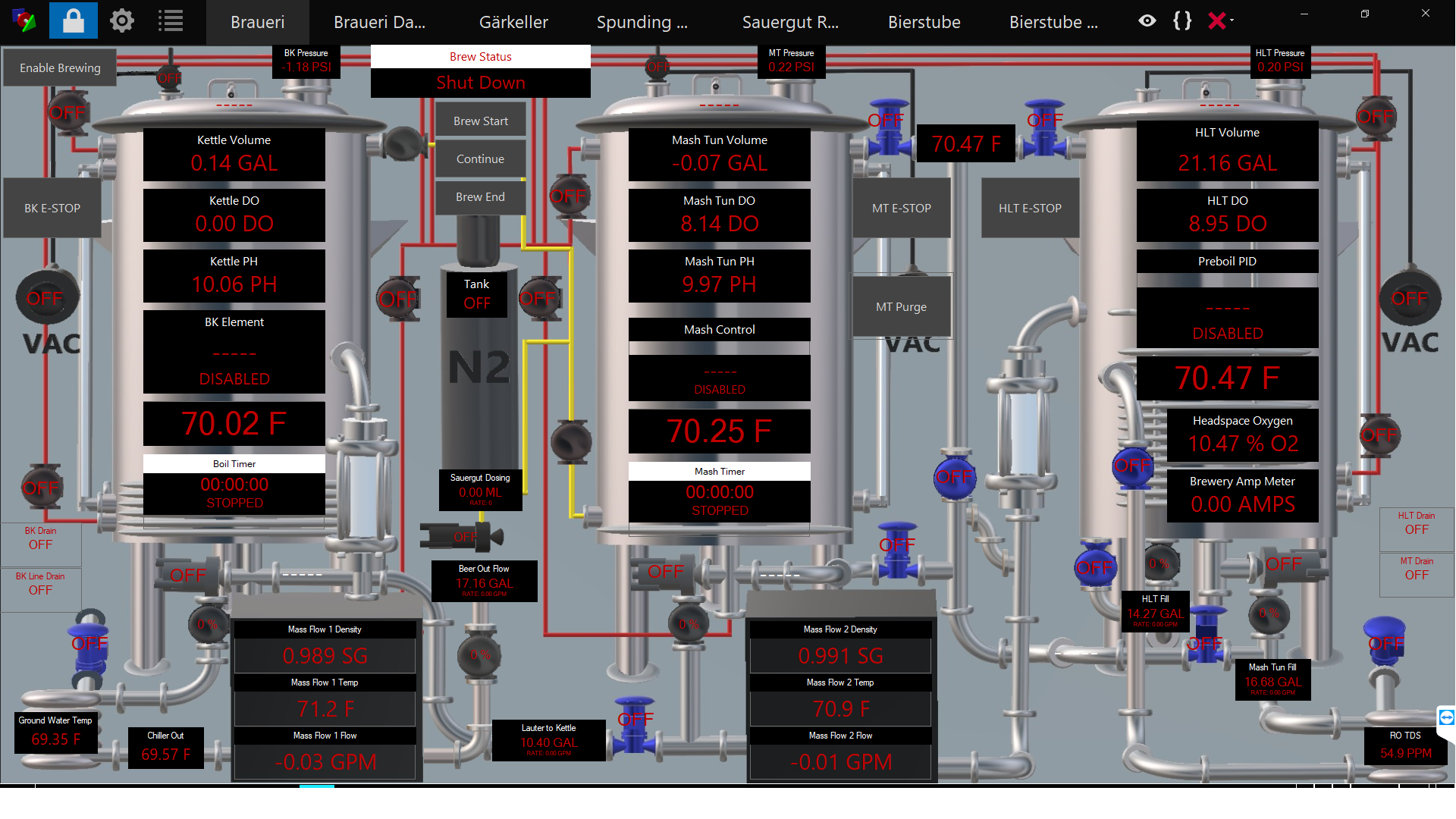TechFanMD
Well-Known Member
I do not do LoDo, but it intrigues me. On the cold side, we all try to avoid oxygenation, and I think a lot of the issues on the cold side are pretty well agreed upon regardless of whether you agree with LoDo or not.
The Mash is the part that I am curious about. I understand removing oxygen from the water, and taking extra care in milling, capping the mash, etc. I still can't wrap my head around how the water doesn't just get re-oxygenated by all of the O2 in the grains.....that's a lot of air gaps and surface area.
So my question: Does anybody just create an enclosed area purged with CO2? Given some of the equipment and lengths people go to, it wouldn't seem hard to pull a small level of vacuum on a mash tun with the milled grains inside, purge with CO2 (maybe vac/purge a few times) then actually pull the pre-boiled water in for underletting by vacuum (evacuating the air in the MT basically having higher atmospheric pressure outside the tun push the water into the mash tun).
Similarly, does anyone just mill under some inert gas by making a small glove box or just having the mill on/off remotely operated and milling in a box purged with nitrogen, CO2, argon, or whatever is available? The area of this box would not have to be terribly large really....
It seems like these would be significantly better methods to avoid oxygen than what I've read here and elsewhere.....many methods of which I just can't wrap my head around them actually having significant effect on O2 levels.
The Mash is the part that I am curious about. I understand removing oxygen from the water, and taking extra care in milling, capping the mash, etc. I still can't wrap my head around how the water doesn't just get re-oxygenated by all of the O2 in the grains.....that's a lot of air gaps and surface area.
So my question: Does anybody just create an enclosed area purged with CO2? Given some of the equipment and lengths people go to, it wouldn't seem hard to pull a small level of vacuum on a mash tun with the milled grains inside, purge with CO2 (maybe vac/purge a few times) then actually pull the pre-boiled water in for underletting by vacuum (evacuating the air in the MT basically having higher atmospheric pressure outside the tun push the water into the mash tun).
Similarly, does anyone just mill under some inert gas by making a small glove box or just having the mill on/off remotely operated and milling in a box purged with nitrogen, CO2, argon, or whatever is available? The area of this box would not have to be terribly large really....
It seems like these would be significantly better methods to avoid oxygen than what I've read here and elsewhere.....many methods of which I just can't wrap my head around them actually having significant effect on O2 levels.







![Craft A Brew - Safale S-04 Dry Yeast - Fermentis - English Ale Dry Yeast - For English and American Ales and Hard Apple Ciders - Ingredients for Home Brewing - Beer Making Supplies - [1 Pack]](https://m.media-amazon.com/images/I/41fVGNh6JfL._SL500_.jpg)


















































